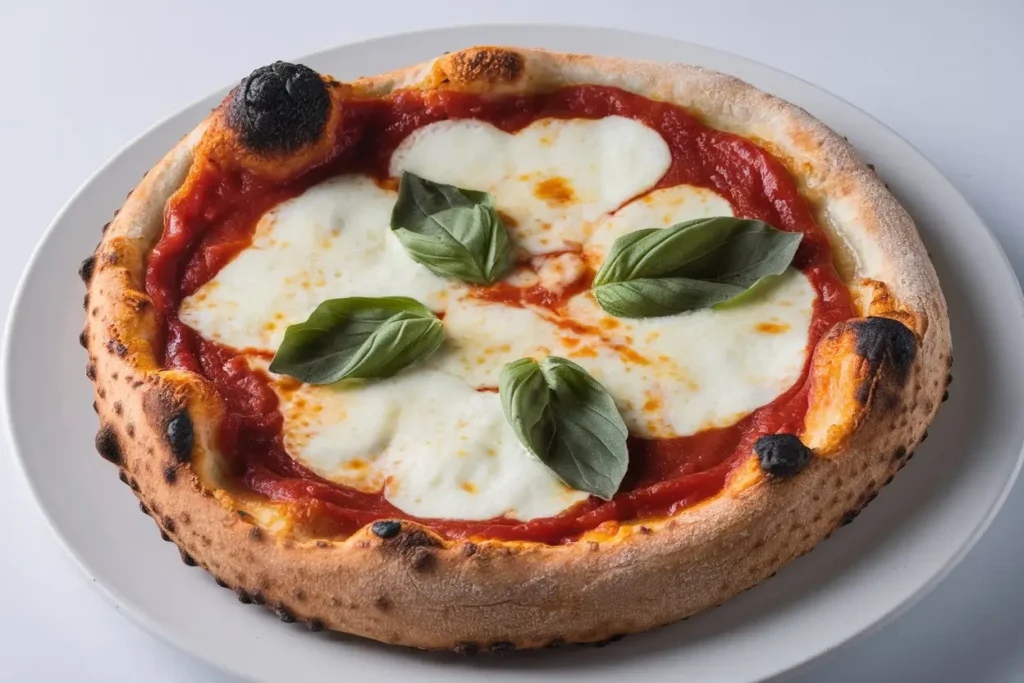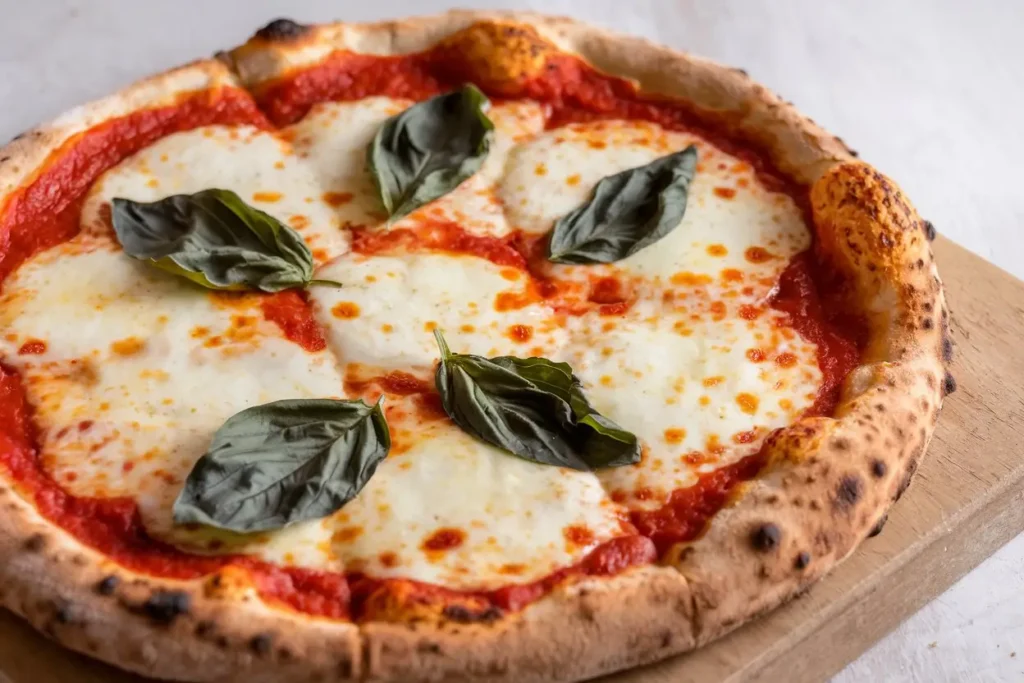Can a Gluten Free Pizza Crust Really Satisfy Your Cravings?
Is it possible to craft a gluten free pizza crust recipe that’s every bit as chewy, crisp, and satisfying as the classic wheat-based version? Data shows that over 30% of Americans are seeking gluten free options, whether due to celiac disease, gluten intolerance, or simply for health and wellness reasons. Yet, the quest for that perfect gluten free pizza crust introduces challenges: dry, crumbly, or flavorless bases that many quickly recognize as “missing the mark.” The good news? With the right recipe and a dash of creativity, you can achieve a golden-brown, restaurant-worthy pizza crust that just happens to be gluten free. Let’s break down the process, so you can finally enjoy pizza night without compromise.
Ingredients List
A great gluten free pizza crust recipe relies on a combination of thoughtfully chosen flours and just enough binding agents to mimic traditional dough’s structure. Whether you’re after a light, airy bite or crave that classic chew, there’s an ingredient combination here for you.
Essential Ingredients:
- 2 ½ cups gluten free all-purpose flour blend (look for a mix with xanthan gum; Cup4Cup, King Arthur, or Bob’s Red Mill work well)
- 1 tablespoon instant dry yeast (for authentic flavor and rise)
- 1 tablespoon sugar (balances flavor and feeds the yeast)
- 1 teaspoon fine sea salt
- 1 tablespoon olive oil (adds richness and helps browning)
- 1 cup warm water (110–115°F, for optimal yeast activation)
- 2 teaspoons apple cider vinegar (boosts moisture retention and flavor)
- 1 large egg (binds ingredients; substitute with a flax egg or aquafaba for a vegan crust)
Potential Substitutions & Flavor Enhancers:
- Swap olive oil with avocado oil for a subtle twist
- Replace sugar with honey or maple syrup
- Try half almond flour for part of the gluten free flour for a nutty edge
- Mix in herbs or garlic powder for extra depth
Timing
Let’s face it: Traditional pizza dough recipes ask for several hours, sometimes even days, of slow fermentation. Not here.
- Preparation time: 15 minutes (gather, measure, and mix)
- Rising time: 30–40 minutes (enough for bubbles to develop)
- Baking time: 20–22 minutes at 425°F (pre-baking and final bake)
- Total time: Right around 75–80 minutes—about 20% faster than most scratch-made gluten free recipes
With less than an hour and a half from start to finish, this gluten free pizza crust recipe makes homemade pizza a realistic weeknight dinner.

Step-by-Step Instructions
Step 1: Bloom the Yeast
Pour warm water into a large mixing bowl. Sprinkle the instant yeast and sugar over the top. Allow it to sit undisturbed for 5–7 minutes or until you see a foamy, creamy layer on the surface. This signals the yeast is alive and kicking, ready to give your crust lift and flavor.
Tip: If your yeast doesn’t foam, check the expiration date and use a kitchen thermometer for accurate water temperature.
Step 2: Combine Dry Ingredients
In a separate bowl, whisk the gluten free flour blend, sea salt, and any seasonings you’d like (think oregano, basil, or garlic powder). Ensure an even distribution—this improves the finished crust’s texture.
Step 3: Mix Wet Ingredients
To the bloomed yeast water, add olive oil, apple cider vinegar, and the egg. Gently whisk everything together, breaking up the yolk and combining thoroughly.
Step 4: Form Your Dough
Gradually add the dry mixture to the wet mixture. Stir with a sturdy spoon or use a stand mixer fitted with the paddle attachment. The dough will form a sticky, soft mass—much wetter and more batter-like than typical wheat dough.
Tip: A wet dough is what gives gluten free pizza its signature chew and keeps it from drying out!
Step 5: First Rise
Cover the bowl with a clean towel or plastic wrap. Place it in a warm, draft-free area for 30–40 minutes. The dough won’t double, but it should puff up and develop air pockets.
Step 6: Shape the Crust
Line a baking sheet or pizza stone with parchment paper. Drizzle lightly with oil. Transfer the dough onto the sheet, then, with oiled fingers, pat and press it into a circle (about 12 inches wide and ½ inch thick).
Tip: Don’t try to roll it—press and shape gently with damp or oiled hands for best results.
Step 7: Par-Bake
Preheat your oven to 425°F (218°C). Bake the crust (no toppings) for 10–12 minutes until it sets and the edges begin to turn golden. This step ensures a crispy base, even when loaded with sauce and cheese.
Step 8: Top and Finish Baking
Remove the crust, top with your favorite sauce, cheese, and toppings. Return to the oven for another 10–12 minutes, or until the cheese is melted and bubbly, and the edges are deeply golden brown.
Tip: For extra crunch, bake directly on the oven rack (on parchment) during the final minutes.
Nutritional Information
Here’s a look at the gluten free pizza crust’s nutritional profile (per slice, based on 8 slices, using standard ingredients):
| Nutrient | Amount per Slice | % Daily Value (est.) |
|---|---|---|
| Calories | 140 | 7% |
| Total Fat | 3.2g | 5% |
| Carbohydrates | 27g | 9% |
| Dietary Fiber | 2g | 8% |
| Protein | 3g | 6% |
| Sodium | 180mg | 8% |
| Sugars | 1.5g | 3% |
- Naturally cholesterol free if using an egg substitute
- Free of artificial preservatives and additives
- Easily adapted to dairy free and vegan diets
Healthier Alternatives for the Recipe
Good pizza is about balance. Here’s how to boost the nutrition of your gluten free pizza crust recipe while keeping the flavor high:
- Substitute half the all-purpose gluten free flour with oat flour or chickpea flour for extra fiber and protein.
- Use unsweetened applesauce instead of oil for a lower fat option (use half as much applesauce as oil).
- Incorporate ground flaxseed or chia seed for extra omega-3s—1 tablespoon mixed into the flour blend works well.
- Make it vegan by swapping the egg with a “flax egg”: 1 tablespoon ground flaxseed + 2.5 tablespoons water, let sit until gelled.
- Add ¼ cup grated zucchini or riced cauliflower for moisture and subtle veggie power (squeeze out excess moisture first).
Serving Suggestions
Pizza offers a world of possibilities, and this gluten free pizza crust is a reliable base for all kinds of flavors.
- Classic Margherita: Tomato sauce, fresh mozzarella, basil, and a drizzle of olive oil.
- Garden Veggie: Bell peppers, mushrooms, spinach, and a sprinkle of feta.
- Protein Punch: Grilled chicken, smoked gouda, onions, and barbecue sauce.
- Mediterranean: Olives, artichokes, sun-dried tomatoes, goat cheese, and arugula after baking.
Try cutting into appetizer-size squares for parties or rolling smaller rounds for individual mini pizzas. Leftovers? Reheat in a skillet for a crispy bottom that’s just as good as fresh.
Common Mistakes to Avoid
Everyone wants that perfect, crispy-yet-chewy bite. Here are the pitfalls that often trip up gluten free pizza makers:
- Neglecting to par-bake: Skipping this sets you up for a soggy crust.
- Pressing the dough too thin: Gluten free dough needs a bit more thickness to support toppings.
- Using cold ingredients: Gluten free flours don’t hydrate as quickly; keep liquids lukewarm to aid yeast activity.
- Skipping the yeast bloom: Inactive yeast means no lift. Always verify foam before moving on.
- Over-loading with toppings: The crust will collapse or get mushy; moderate is the secret.
Letting the dough dry out by overbaking is another common blunder. Watch closely during the final minutes for a just-golden finish.
Storing Tips for the Recipe
Enjoying leftovers is a breeze with these simple storage suggestions:
- Short-term: Wrap cooled pizza slices in foil or an airtight container; refrigerate for up to 3 days.
- Long-term: Freeze par-baked crust (before toppings) between parchment sheets, then wrap tightly. Keeps well for up to 2 months.
- Reheat for best results: Use a hot skillet or toaster oven to revive crispness. Avoid microwaving, which can make the crust rubbery.
If prepping ahead, store the dough (before rising) covered in the fridge for up to 24 hours. Bring it to room temperature before shaping and baking.
Key Points & Invitation
Making an excellent gluten free pizza crust doesn’t need to be complicated or time-consuming. With this gluten free pizza crust recipe, you gain a crispy, flavorful, and satisfying base for any topping. Ready for tasty, gluten free pizza at home? Try this recipe, share your experience in the comments or review section, and subscribe for more crave-worthy gluten free recipes and ideas.
FAQs
Can I use a bread machine to mix the dough? Yes, set your bread machine on “dough” mode and combine the wet and dry ingredients as listed. Remove after initial mixing and proceed with rising and baking steps.
What’s the best gluten free flour blend for pizza crust? Look for blends with a balance of rice, potato, and tapioca flours, plus xanthan gum or guar gum. Cup4Cup and King Arthur Measure-for-Measure are top picks.
Is there a substitute for yeast in this recipe? You can try 1 tablespoon baking powder in place of yeast for a quicker, non-yeasted version. Expect a more biscuit-like, less airy crust.
How do I make the crust dairy free? This recipe uses oil, not butter, and works perfectly with dairy free cheese on top. Check your gluten free flour blend for any hidden dairy.
Why is my crust too doughy in the center? This can happen if the crust is too thick, under-baked, or topped before par-baking. Always bake the crust partially before adding sauce or cheese.
For even more tips, tricks, and recipes, follow our blog and join the conversation!


